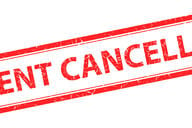You have /5 articles left.
Sign up for a free account or log in.
As questions about government dysfunction and political polarization dominate the news cycle, reports regularly surface about the most partisan or the most ideological industries and professions in the nation. College and university professors are routinely noted as being extremely liberal relative to most Americans, and they are often in the news for protesting for liberal causes and against the Trump administration. But such reports miss a large group that has largely flown under the radar for decades: the extremely progressive, activist administrators who now dominate America’s institutions of higher education.
While some faculty members do protest, and professors are collectively liberal as a class, those points obscure two very important, intertwined facts about collegiate life today.
The first is that faculty members have seen their ability to set the tone and agenda on college campuses significantly diminish. With constant focus on enrollments and rankings, and classes and programs that cater to those ends, collegiate corporatization has marginalized the role of faculty in terms of setting the teaching and learning agenda. Moreover, with stresses of family life and the dictum of publish or perish, survey data reveals that most faculty are not that particularly politically engaged with students on their campuses and want to work on their research or simply go home. Issues of civic engagement and social change are not a priority of faculty members, and sociopolitical engagement with students is the exception, not the norm.
A Critique of Samuel Abrams
Elsewhere on Inside Higher Ed today,
Dafina-Lazarus Stewart challenges
Abrams’s assertion that student affairs
administrators are overwhelmingly
liberal and socializing students
in an ideological way. Read
more here.
The second is that higher education is now ruled by an ever-growing professional class of administrators who call the shots outside the classroom. They not only have deep influence over campus politics and student life via offices such as the Dean of Students, Offices of Diversity and Inclusion, Student Success, and Engagement and Leadership, but they are also more liberal than any other occupational group in the nation.
Indeed, through a new national survey of administrators in higher education that I conducted over the summer of 2018, which examined a nationally representative cross section of over 900 college administrators, I found that administrators are far more liberal than both the faculty members who teach our students in the classroom and the very students whom they indoctrinate. Two-thirds of administrators self-identify as liberal, with 40 percent of that liberal pool stating that they are far left. A quarter of them call themselves middle of the road, while only 5 percent say they are on the right. That makes for a liberal-to-conservative ratio of 12 to one.
Faculty members, in contrast, have a ratio of about six to one, with 13 percent of our nation’s professors identifying as conservative. Students are even more balanced: 42 percent of first-year students are centrist, while 36 percent state they are liberal and 22 percent say they are conservative -- or a 1.6-to-one ratio.
Those statistics would be troubling enough given the extreme ideological mismatch on campuses between administrators, on the one hand, and the students and faculty, on the other. But the extreme distortion is even more pronounced when the political bent of administrators is compared to the nation’s work force as a whole.
Data from the General Social Survey make the imbalance powerfully clear. They show a nation that clusters around the ideological center but leans a bit to the right. I broke the sample down into 23 Census Bureau-classified occupational categories, including occupations in a wide range of fields: management, business and financial operations; farming, fishing and forestry; building and grounds maintenance; and many others.
Two-thirds of 23 groups lean to the right, according to my calculations, with those in transportation and protective services being the most conservative industries. The remaining third lean to the left, and, unsurprisingly, those that have high proportions of liberals to conservatives are in tech, the legal community and the arts, media and entertainment world.
Turning to higher education, our nation’s faculty members are on par with those who work in other high-skilled and intellectual capital-intensive fields. Moreover, the faculty is not hugely out of line ideologically when compared to other highly educated Americans, such as engineers, lawyers and those who work in the media, the arts and entertainment.
What is truly troubling is that our nation’s influential college administrators are completely off the scale in relation to the rest of the nation in terms of their ideological leanings with a 12-to-one liberal-to-conservative ratio. The administrators’ ratio is over twice the size of the nearest group -- those who work in the legal professions -- and also two times that of the faculty members who teach in higher education.
Breaking down the 23 categories further into narrow professions can reveal certain particularly liberal jobs, including union organizers, bartenders, yoga instructors and environmentalists. But the simple fact remains that administrators in higher education are essentially far more liberal as a class when compared to the majority of Americans and their respective industries.
The import of this finding cannot be overlooked. Administrators deeply shape the experiences of our next generation of Americans and are out of step with the students they serve and the rest of the nation. Colleges and universities need context on their campuses, and the political and ideological monoculture that silences many political and ideological viewpoints must end. It endangers real free speech, open expression and the exchange of a multiplicity of ideas -- exactly the attributes of higher education that we need to protect in our current chaotic moment of history.




